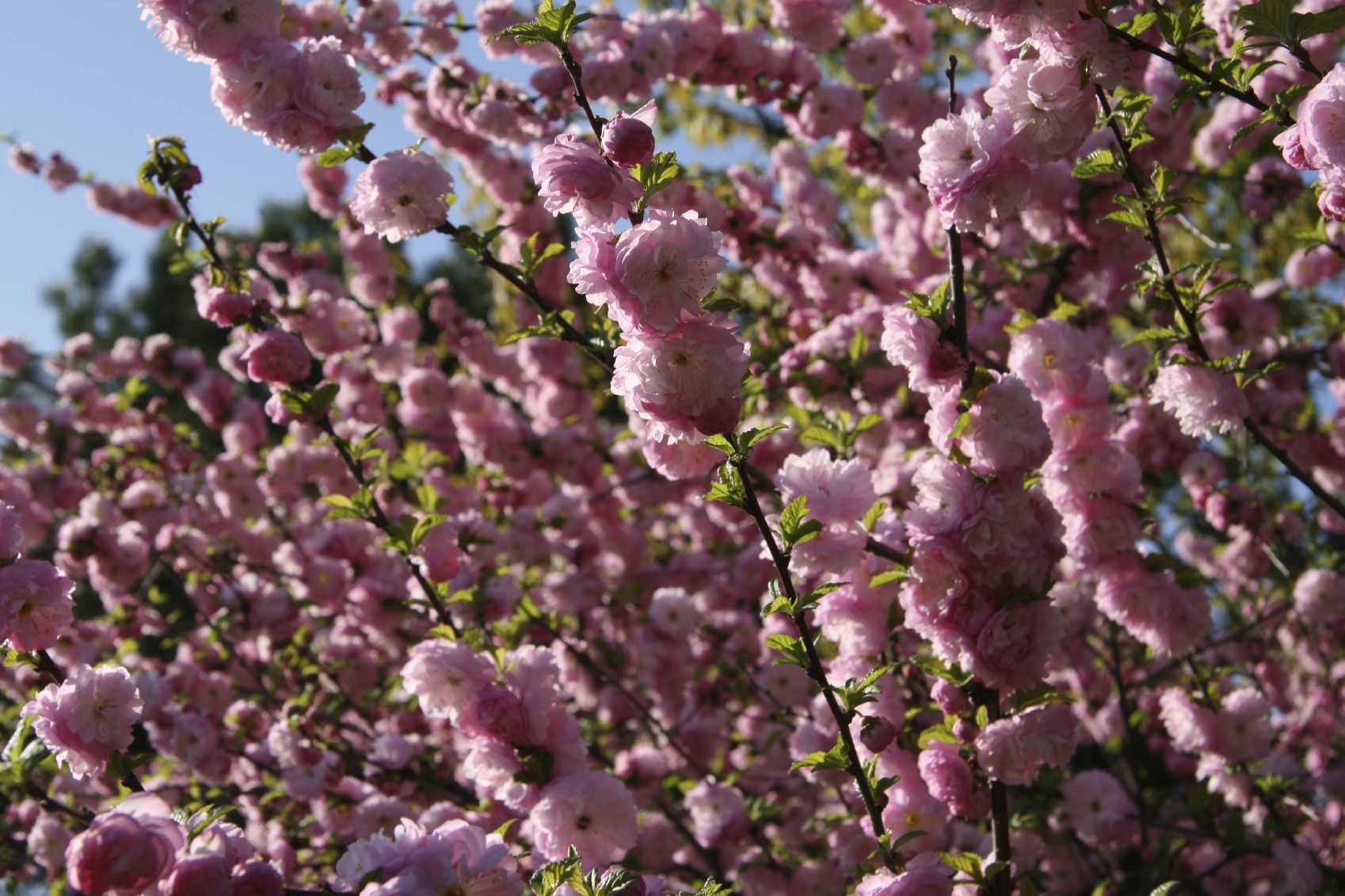Pruning Flowering Almonds: How And When To Trim Flowering Almond Plants


An ornamental flowering almond (Prunus glandulosa) entrances you in early spring when its bare branches suddenly burst into flower. These small trees, native to China, are often multi-stemmed shrubs about 4 or 5 feet (1-1.5 m.) high, with lovely white or pink flowers. Pruning a flowering almond tree annually is a good way to keep the tree full and compact. If you want to learn how to prune a flowering almond, read on.
Pruning Flowering Almonds
Ornamental almonds are easy to grow. The plants are not picky about soil conditions as long as the site is well-drained, and they grow well in full sun or partial shade. However, in order to obtain more flowers on the tree, you’ll do better to plant them in sun. The amount of sun the tree gets impacts how heavily it blooms. Flowering almond trees bloom in spring before they begin to leaf. The frothy flowers can be single or double, depending on the cultivar, and they seem to explode off of every limb. Since flowering almond trees are grown for the blooms, not fruit, the growth pattern of the blossoms helps you figure out when to trim flowering almond plants. Almond trees bud on old wood. Therefore, ornamental almond pruning should take place in late spring, immediately after the blooms fade. That way, pruning flowering almonds won’t reduce the number of beautiful blossoms you will get the following spring. If you prune in winter, you’ll clip off many of next year’s buds.
How to Prune a Flowering Almond
Pruning a flowering almond tree should be an annual affair. The trees respond well to pruning, and ornamental almond pruning is the best way to keep the tree at an optimal height. When you learn how to prune a flowering almond, you’ll find it a simple matter. You’ll need to sterilize the pruners with denatured alcohol before pruning flowering almonds to be sure you don’t spread disease. The next step in pruning a flowering almond shrub is to trim out all dead, insect-infested, or diseased branches. Prune back branches that cross or rub against each other. Finally, complete your ornamental almond pruning by cutting back about a third of the tree’s new growth. Make each cut just above a lateral branch or bud. This clipping keeps the tree compact and encourages the formation of new buds. Some claim it encourages deeper rooting too.
Sign up for the Gardening Know How newsletter today and receive a free copy of our e-book "How to Grow Delicious Tomatoes".

Teo Spengler is a master gardener and a docent at the San Francisco Botanical Garden, where she hosts public tours. She has studied horticulture and written about nature, trees, plants, and gardening for more than two decades, following a career as an attorney and legal writer. Her extended family includes some 30 houseplants and hundreds of outdoor plants, including 250 trees, which are her main passion. Spengler currently splits her life between San Francisco and the French Basque Country, though she was raised in Alaska, giving her experience of gardening in a range of climates.